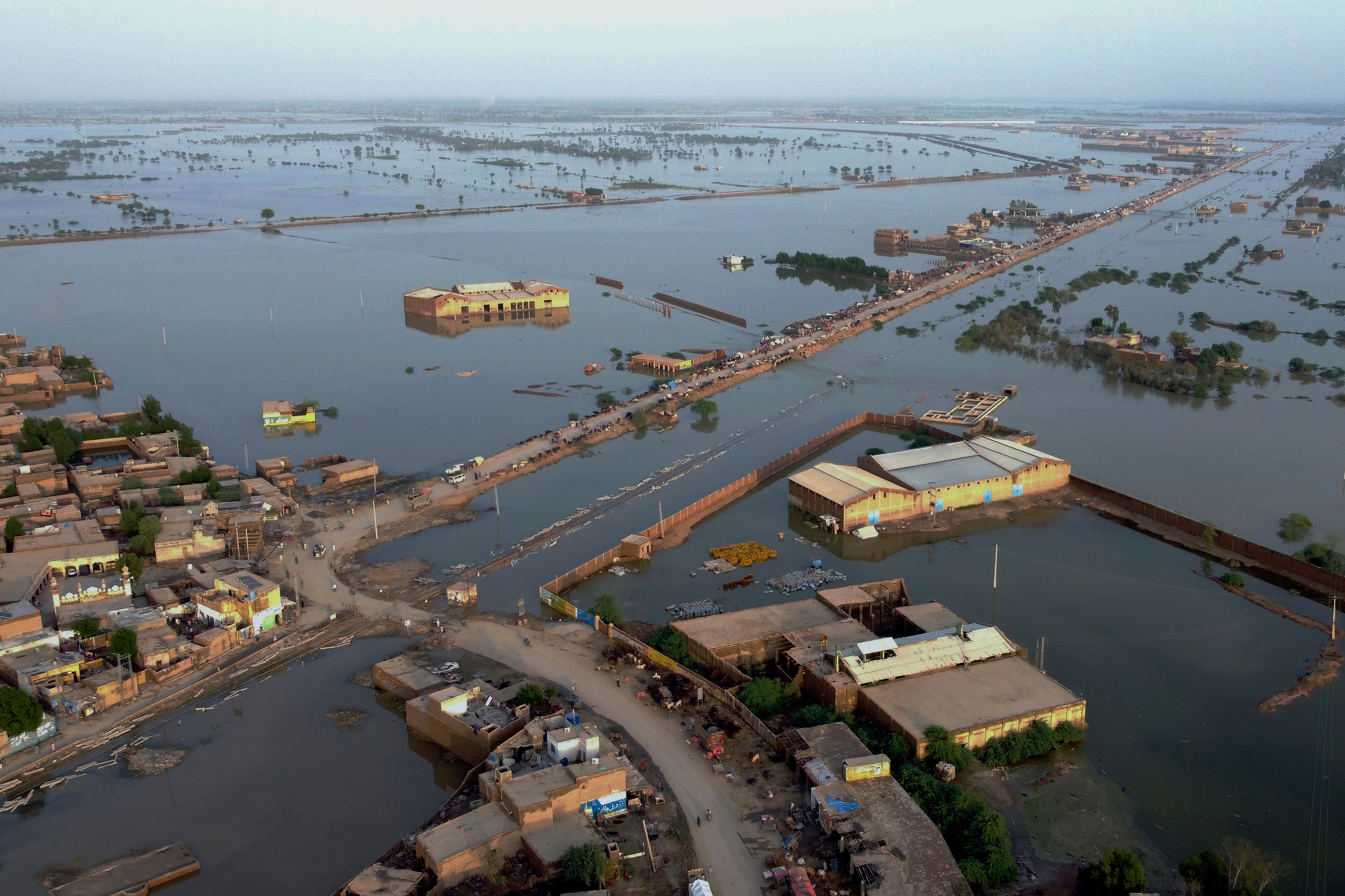Genomes, cloud seeding, sandstorm forecasts – Saudi and Pakistan unite to combat devastating weather events
Land degradation and water shortages are two key battles facing arid countries in the fight against climate change

The devastating floods across Pakistan earlier this year bear witness to the effects of climate change on the region.
Addressing climate injustice, Shahid Rashid Awan, chief conservator of forests in Pakistan stated, “Pakistan is in the top 10 countries who are vulnerable, but is responsible for less than 1 per cent of the world’s greenhouse gas emissions.”
At the Saudi Green Initiative, running alongside Cop27 in Egypt’s Sharm el-Sheikh, experts from the two countries united to discuss the radical solutions needed. Both countries are arid or semi-arid and both are working on steps to avert further catastrophes by greening degraded land.
Regreened areas have the potential to alter local weather patterns and even change the direction of the winds. Ambitious projects for tree planting, increasing vegetation cover and preventing soil erosion are under way in Pakistan and Saudi Arabia.
But, a key question is how to plant 10 billion trees sustainably — and successfully. Shahid Rashid Awan explained, “It's not the planting, it’s assisting nature in bringing up the trees. The basic things for these forestry mega projects is the availability of land and water.”
Alongside more traditional methods such as windbreaks to check the movement of sand dunes and harvesting the rainwater, the use of technology was high on the agenda.
Dr Ayman S Ghulam, the CEO of the National Center for Meteorology, reported on how Saudi was building up their technological infrastructure to generate 10-day advance forecasts for flooding and storms. Accurate forecasting systems and early warning systems will let farmers know when sand storms are coming so they can take mitigating steps to protect crops. He spoke of deploying drones for “cloud seeding” – a process by which they’re sent into the clouds and “it’s like squeezing them to produce more rain”.
Could genetic engineering of plants help in the fight against desertification? Khaled Alabulqader, the CEO of the National Center for Vegetation Cover and Combating Desertification, was unequivocal.
“Yes. We call it the native trees genome project. We are studying the genetic make-up of the native trees to look at their strengths and weaknesses, and whether altered genome patterns could create plants that are more drought tolerant,” he said.
But neither the traditional or technological approach is likely to succeed without buy-in from local populations most affected by desertification.
As Khaled Alabulqader stated, “We need to engage and empower society with these programmes. Last year in Saudi Arabia, we had more than 70,000 volunteers helping with planting.”
Find out more about the MGI summit and SGI forum here: greeninitiatives.gov.sa
Subscribe to Independent Premium to bookmark this article
Want to bookmark your favourite articles and stories to read or reference later? Start your Independent Premium subscription today.